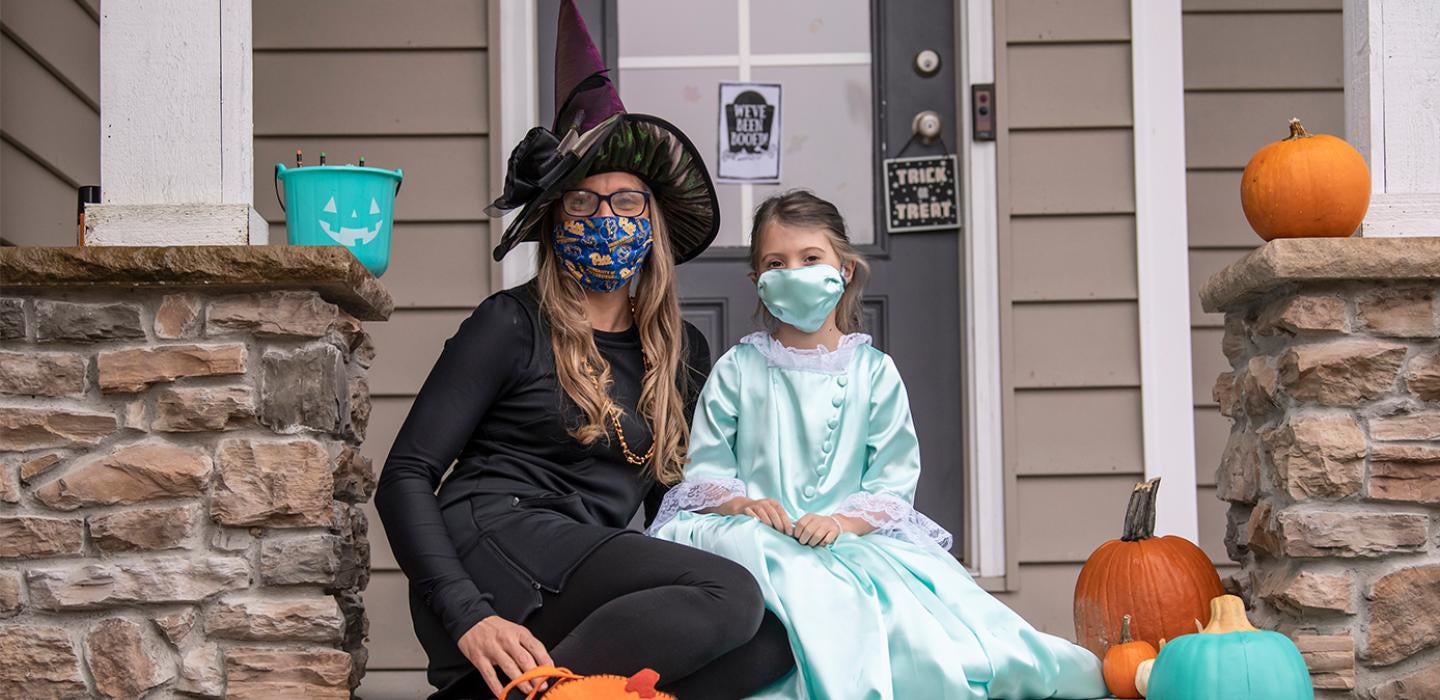
Subscribe to Pittwire Today
Get the most interesting and important stories from the University of Pittsburgh.Trick-or-treating this year still won’t be the same as it was pre-pandemic, but child psychology and nutrition experts at the University of Pittsburgh say that doesn’t mean children can’t have fun this Halloween weekend.
On communication with kids
“The pandemic has caused parents and adults to think differently during this time of transition. For children especially, Halloween is a fun holiday,” said Denise Esposto, a developmental healthcare consultant with HealthyCHILD, part of Pitt’s Office of Child Development. “Explaining to children why things are different is important from a developmental perspective. If we don’t explain to children, then they will make up their own answers, which could be frightening to them.”
Esposto says adults should stay positive when explaining to their children why Halloween won’t be like years past.
“Parents shouldn’t make it frightening for children,” she said. “Instead, giving positive direction like ‘We’re still going trick-or-treating. We’re just going to clean our hands more in between houses or keep our distance,’ will help children identify current practices.”
Door-to-door safety
For areas participating in trick-or-treating, Caroline Passerrello, a nutrition instructor in Pitt’s School of Health and Rehabilitation Sciences, has tips on going door-to-door while distancing:
- If you're not feeling well, stay home. No candy is worth spreading disease.
- Limit group sizes.
- Wear face coverings, even when costumes include masks.
- Use hand sanitizer in between houses.
- If you’re handing out candy, consider using “treat chutes,” simple pipe systems where treats can be slid downward through a pipe from a residence to a walkway.
- Another treat option: Leave candy dishes out for children, rather than handing treats to them. Limit each dish to just one option to keep kids from searching for their favorite flavor. (But remember, we now know that COVID-19 doesn't spread on surfaces, so no need to wipe down candy packages.)
- Hand out non-food items such as stickers, glow sticks and bubble wands.
- For added protection, try to target the homes of family and friends that you know are vaccinated.
Tricks for treat alternatives
Passerrello says handing out non-food items can also be a great alternative for children prone to food allergies and parents looking to limit sugar, and doesn’t have to cost more than food-based treats.
Isabeau Brianna Dela Torre, a graduate student in Pitt’s Dietitian Nutritionist Program who lives with life-threatening food allergies, endorsed this tip.
“Sometimes, our neighbors would give out bottles of water to stay hydrated,” Dela Torre said. “It was exciting to get something different than expected.”
As for the coronavirus’ presence on candy packages, the Centers for Disease Control and Prevention says the virus doesn’t live very long on surfaces.
Passerrello and Esposto say parents who elect not to take their children trick-or-treating can be creative in making Halloween enjoyable for their children with indoor or backyard activities like pumpkin carving, drawing activities and scavenger hunts.
“Enjoy the holiday if you celebrate it. Make it festive and happy, especially for the child,” Esposto said.
This story first appeared in 2020 and has been updated.


